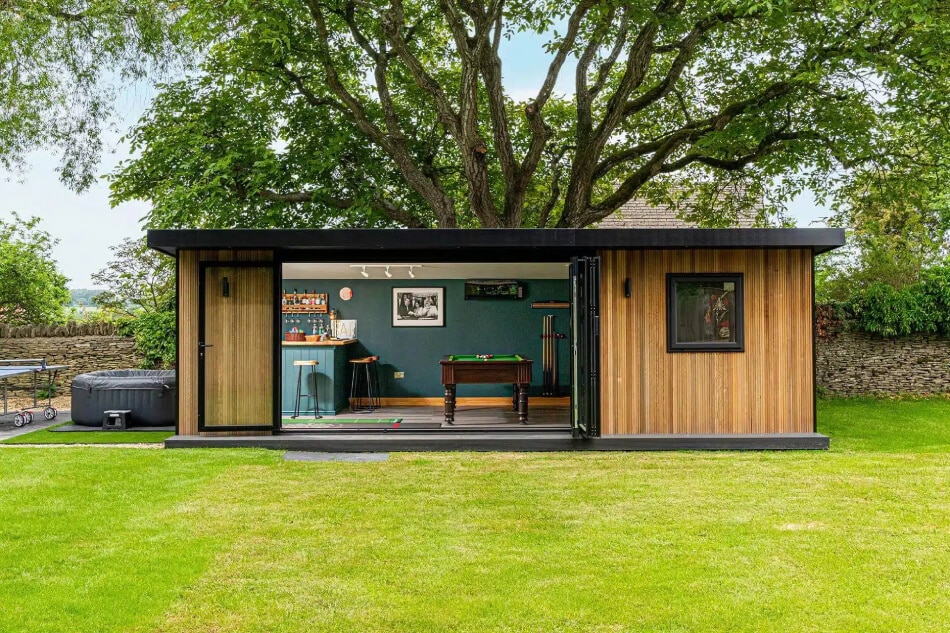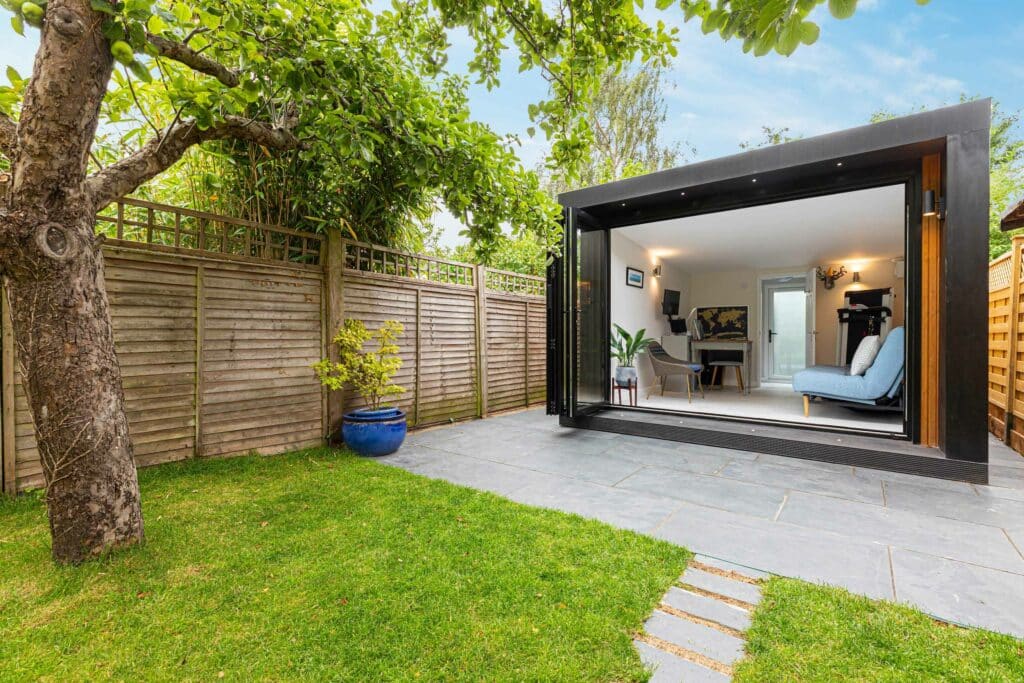Best Info For Planning Permission On Garden Outhouses
Best Info For Planning Permission On Garden Outhouses
Blog Article
What Planning Permits Are Required For Garden Rooms, Etc. In Relation To Highway Issues?
Highways concerns, whether they are related to the construction of conservatories, garden offices, outhouses, or even extensions and gardens are likely to have an important impact on the need for permission to plan. Here are key considerations to consider when planning for highways
Planning permission is required if the structure impacts drivers' vision lines or intersections at bends or junctions of the road. The authority for planning evaluates whether the building is a danger to road safety.
Proximity to Highways:
Typically, any structures that are near to the highway such as front gardens or extensions close to the street require approval for planning. There are specific distance regulations to ensure that the construction is not a hindrance to the safe operation of the highway.
Access and Egress
Planning permission might be needed if you want to alter or construct new access points. The access point and the egress point should be secure to prevent disrupting traffic.
Parking Facilities:
Planning permission is required for any new structure that will require parking or alter existing spaces. The planning authority will determine whether the new development has enough parking and doesn't create parking congestion in the street.
Traffic Generation
Projects that could bring in additional traffic, such as gardens that are that are used for business that have clients who visit, require planning permission. This will include a review of the local traffic level as well as road condition.
Impact on Pedestrian Access
Planning permission is required if your proposed construction will be encroaching on pedestrian walkways or pavements. One of the most important considerations is to ensure that pedestrian access is not hindered, and is safe.
Construction Effects on Highways
The effects of construction work on highways, which includes the movement of large vehicles and temporary obstructions might require planning permission. The planning authorities are able to set up conditions to limit disruptions on the roads during construction.
Water runoff and drainage
Another thing to take into consideration is the effect of the construction on drainage or runoff. Planning permits are required to ensure that any new construction doesn't cause more flooding or drainage problems that may affect the road.
Street Furniture and Utilities:
Planning permits are required for any building which will affect street furniture, such as lampposts, signs, or underground utilities like electrical cables and water pipes. To address these concerns the planning authority will work with the relevant agencies.
The Highway Authority Guidelines are in compliance. Highway Authority Guidelines:
Local highway authorities might have rules and regulations specific for developments close to highways. The planning permit will guarantee that these rules are observed in order to ensure the efficiency of roads and ensure safety.
Disturbing and noise from traffic:
The planning permission is needed in the event that the proposed structure is likely to cause more disturbance and noise to traffic (e.g. an office in the garden which receives visitors or deliveries).
Accessibility to Public Transport:
Permission is required for any development that may impact access to public transport, such as trains or bus stops. Planning permission is needed for any developments that might affect public transport facilities, such as train stations or bus stops.
In the end, concerns about highways are a significant element in the process of approval of conservatories, garden rooms or extension of the garden. To prevent negative impacts on traffic, pedestrian accessibility or the safety of roads and infrastructure, it is crucial that the proposed development does not impact these aspects. Check with the local planning authorities as well as the highway authority at an early stage of the planning process to address these concerns. Take a look at the best what's a conservatory room for more tips including out house for garden, what size garden room without planning permission, costco garden buildings, insulated garden rooms, outhouse garden rooms, what is a garden room, garden rooms, garden rooms brookmans park, what size garden room without planning permission, myouthouse and more.
How Tall Can You Make In A Garden?
In the case of building gardens, conservatories, outhouses, gardens offices, or extensions, specific limits on height determine if planning permission is needed. Here are the key height-related criteria to be aware of General Height Limits:
The height of an extension or detached outbuilding should not exceed 4 meters with an eaves-pitched roof (such as Gable roofs).
If you have a flat roofing, a single-pitched roofing, or any other type that has a maximum height, it should not be more than 3 meters. The maximum height cannot be to exceed 3 metres for any other kind of roofing (flat, one-pitched etc.).
Proximity with boundaries
The maximum height of a structure that is less than 2 meters from the boundary cannot exceed 2.5 meters. This is applicable to garages, sheds as well as similar structures.
The height of the eaves
In any structure, the maximum eaves (the distance from the lowest point of the roof) must not be more than 2.5 meters.
Conservatories and Extensions
Height of rear extensions with one story must not exceed four meters. This includes any parapets and the roof.
Side Extensions
Extensions to the sides of the house should not exceed 4 meters and must not be larger than half the original width.
Special Roofs
The roofs of structures with a flat top are typically restricted to a height of no more than 3 meters.
Additional restrictions in designated zones:
In conservation zones designated as protected zones, Areas of Outstanding Natural Beauty and other designated areas there may be limitations on height that are more stringent and planning permission is required to build structures that are otherwise allowed.
Buildings within National Parks:
National Parks can have height restrictions similar to those in designated areas. Permission for planning is necessary.
Roof Design
The height of the highest point of roof (excluding chimneys and antennas) should be considered. When the maximum point is greater than permitted development limits Planning permission will be needed.
Neighbours' Impact:
Even if a structure falls within the permitted height limit however, planning permission could be required if it substantially impacts the sunlight, privacy, or view of neighboring properties.
Maximum Overall Height
The total height of any structure must not be more than 4 meters. In this case the highest point of a garden-office with an incline roof that is dual pitched should not exceed 4 meters.
Decking or Platforms
The decking, platforms or other structures attached to the building must not elevate the ground more than 3 metres. This will avoid requiring the issuance of a permit for development.
You should always check with the local authority for planning to find out about any modifications to regulations or specific rules. Even if the development is in the permitted development rights (PDR) local variations or property conditions can require permission to plan. Follow the top rated glass garden rooms prices for website info including insulated garden rooms, composite summer house, best electric heater for cabin, garden rooms near me, garden rooms, garden outhouses, small garden office, outhouse garden, 4m x 4m garden room, garden office hertfordshire and more.
Regarding Agricultural Land What Type Of Planning Permit Will You Need To Build Garden Rooms And Other Structures?
If you plan to build the conservatory, an office, an outhouse or extend your land, you will need to apply for planning permission. Here are the main points: Change of Use:
The land that is used for agriculture is a good place to start farming activities and related ones. The change of its purpose to gardens or residential uses requires approval for planning. This is because it requires shifting the agricultural use.
Permitted Development Rights:
Residential land is subject to a different set of permitted development rights than agricultural land. In certain cases agricultural structures can be built without planning approval. These rights, however only apply to farming structures.
Size and Scale
The size and scale of the proposed structure can influence whether a planning permit is needed. The possibility of needing permission is greater for bigger buildings and those that take up a substantial area of land.
Impact on agricultural use:
Planning permission will likely to be required if the new construction hinders the agricultural activities of the land. This may mean reducing available space for livestock and crops.
Green Belt Land:
If the land for agriculture is designated as Green Belt, there are further restrictions to stop urban sprawl and protecting open space. Any new building or structure constructed upon Green Belt Land is required to be granted planning permission and meet certain criteria.
Design and Appearance
The structure must be constructed and designed in a way that is compatible with the rural features of the area. Planning permission ensures the proposed building doesn't adversely affect the natural landscape.
Environmental Impact:
It is crucial to take into account the environmental impact prior to building on an agricultural property. Planning permission could require an environmental assessment to ensure that the proposed structure does not harm local ecosystems or wildlife habitats.
Near Existing Buildings
The proximity of a garden space or office that is being proposed to the existing farm facilities can influence planning requirements. The structures built close to existing farm structures may be seen differently from those situated in open fields.
Access Infrastructure
It is crucial to think about the effects of the new structure on infrastructure and access, including roads, water and waste management. Planning permission will decide whether or not current infrastructure supports the new construction.
Classification of Order:
Agricultural land is included in specific use classes that are defined by planning laws. In order to ensure that the proposed use is compatible with local planning policies and regulations, it's usually required to seek planning approval before changing the class.
Local Planning Policies:
Local planning authorities are required to have specific policies for agriculture-related land. These policies will determine the extent to which planning permission for non-agricultural buildings are granted, taking the local development plans as well as the needs of the community into account.
National Planning Policy Framework
In the UK, National Planning Policy Framework (NPPF) offers guidelines as to the best way to have land developed and utilized. Permission to build structures on agricultural land will be assessed in light of the NPPF that emphasizes sustainable development and protection of rural land.
In summary it is required to permit the construction of greenhouses, gardens, garden rooms outhouses, gardens offices, or extensions to agricultural land. This permit is needed to ensure that the land uses are modified and in line with national and local policies. It is important to consult with your local authority to be aware of the particular requirements. View the best fitness tips welwyn garden city for more examples including herts garden rooms, costco garden room, garden room planning permission, ground screws vs concrete base, outhouse garden rooms, garden rooms near me, garden office electrics, garden rooms, conservatories and garden rooms, armoured cable for garden room and more.